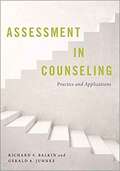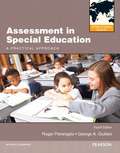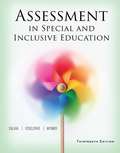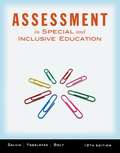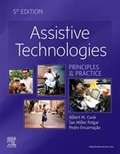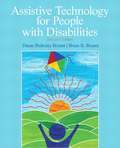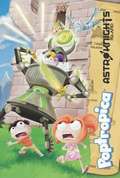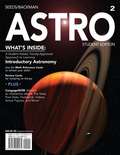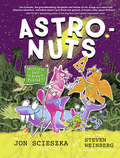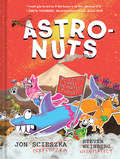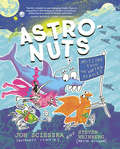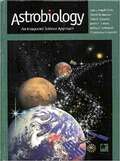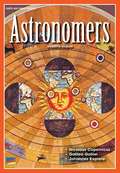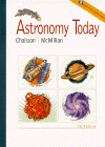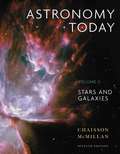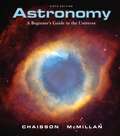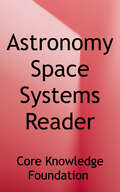- Table View
- List View
Assessment in Counseling: Practice and Applications
by Gerald A. Juhnke Richard S. BalkinStudents often experience assessment courses, and subsequently the textbooks used for the course, as a statistics-heavy class accompanied by an encyclopedia of a variety of assessments. Assessment in Counseling alternatively emphasizes the skills used in assessment, thereby enabling students to apply these skills across a broad range of assessment instruments and strategies. Assessment, like most core areas of counseling, has a theoretical basis and a pertinent, practical component. However, this practical component often gets lost in the application of the skills and use of instruments that heavily rely on psychometric properties. <p><p> Written in an accessible, conversational tone, this text focuses on the application of the theoretical and measurement concepts of assessment in counseling and introduces three case studies that are followed throughout the text. Additionally, instead of introducing readers to a plethora of instruments, the authors select seminal measures that students are likely to approach and use in the profession. Through the use of this text and course content, one will acquire the skills to search, select, and administer the type of assessment instruments that he/she deems helpful for their practice as a professional counselor, regardless of specialization. Ultimately, this textbook serves as an invaluable guide for administering, scoring, interpreting, and communicating assessment results.
Assessment in Special Education: A Practical Approach (Fourth Edition)
by Roger Pierangelo George A. GiulianiThe fourth edition of Assessment in Special Education covers assessments for every disability type while examining each stage of the assessment process. Chapters discuss the most current and reliable assessment measures used in schools to determine all areas of special need from infancy, to school-age and into adulthood. This book addresses current topics such as IDEIA, curriculum-based assessment, curriculum-based measurement, functional behavior assessments and behavioral intervention plans.
Assessment in Special and Inclusive Education
by John Salvia James Ysseldyke Sara BoltASSESSMENT IN SPECIAL AND INCLUSIVE EDUCATION offers you basic assessment information along with a handbook-style reference to comprehensive, frank reviews of the tests most commonly administered in K-12 schools. The thirteenth edition brings to the forefront the important topics of MTSS/RTI and ELL, while retaining key features that have made the text a classic. The authors include a focus on both classroom-based tests designed to inform instruction and intervention, as well as more formal standardized tests that are commonly used to determine eligibility for special education. Whether you are a novice or an expert, this text will equip you with the knowledge and tools to effectively and efficiently assess your students' skills and abilities. Featuring an emphasis on improved outcomes, it shows you how to go beyond efforts designed to make predictions about students' lives to efforts that can make a difference in the lives of the students you serve.
Assessment: In Special and Inclusive Education (Twelfth Edition)
by John Salvia James Ysseldyke Sara BoltAssessment is a process of collecting information for the purpose of making important decisions about students. It is critical that those decisions be made both appropriately and fairly. Noted as the standard for professional resources in the field, ASSESSMENT offers basic assessment information along with a handbook-style reference of frank, comprehensive reviews of the tests most administered in K-12 schools. Featuring an emphasis on improved outcomes, the book equips teachers with the tools and knowledge to do assessments correctly as well as use assessment information to bolster student competence.
Assistive Technologies: Principles And Practice
by Albert M. Cook Janice Miller Polgar Pedro EncarnaçãoMaster the assistive strategies you need to make confident clinical decisions and help improve the quality of life for people with disabilities. Based on the Human Activity Assistive Technology (HAAT) model developed by Al Cook, Sue Hussey and Jan Polgar, Assistive Technologies: Principles & Practice, 5th Edition, provides detailed coverage of the broad range of devices, services, and practices that comprise assistive technology. This new text offers a systematic process for ensuring the effective application of assistive technologies - and focuses on the relationship between the human user and the assisted activity within specific contexts. It features over 30 new photos and illustrations, as well as, updated chapters and case studies that reflect current technology.
Assistive Technology For People With Disabilities (Second Edition)
by Diane Pedrotty Bryant Brian R. BryantAssistive Technology for People with Disabilities, Second Edition, includes eight comprehensive chapters that focus on devices and software to enhance the lives and promote the independence of people with disabilities. Updated with new research, content and features to address current developments in the field, the book approaches assistive technology and education in a lifespan, multidisciplinary manner by discussing the use of current technology in the fields of special education, rehabilitation, speech-language pathology, and other disciplines. Featured devices and software will help you understand how areas such as mobility, communication, education, independent living, and access to information media affect learning and living for individuals with disabilities. You will also gain a great understanding of the foundational and historical perspectives of AT, assessment, universal design, and the ADAPT framework, which is a tool to help educators make decisions about appropriate AT, student needs, and the demands of the environment. Developed from the authors' years of experience teaching both K-12 students and adults, as well as their own framework for understanding assistive technology application and integrating technology into instruction, this new edition addresses assistive technology that promotes knowledge and skills, practical application and a myriad of opportunities that good technology provides for persons with disabilities.
Assistive Technology in the Classroom: Enhancing the School Experiences of Students with Disabilities (Third Edition)
by Amy G. Dell Deborah A. Newton Jerry G. PetroffWith an emphasis on the integration of assistive technology into the curriculum, this text focuses on how assistive technology can be used in schools to enhance the teaching and learning of students with disabilities. This link between technology and teaching and learning drives the book's organization as well as its content. It is organized by school-related tasks that students must perform on a daily basis to be successful -- reading, writing, practicing academic skills, and communicating with their teachers and peers – and presents descriptions of technology-based solutions to the obstacles students with disabilities face in completing these tasks. Since being able to access computers is one major barrier, the text features a section on making computers accessible to students with a wide range of disabilities. A companion web site offers up-to-date information on product names, vendors, web site addresses, and other time-sensitive material.
Asteroid, Meteoroid, and Comet Facts (Into Reading, Level T #76)
by Bruce NaylorNIMAC-sourced textbook
Astonishing Nature: Forces of Nature Unit 4
by McGraw-HillHow does Earth change? Earth is constantly changing. Scientists study all parts of what makes our planet survive, thrive, and adapt. It is important for us to know and predict patterns that affect Earth so that we can protect it. It is also important for us to understand the natural forces that affect Earth. The more we know, the more we can do to help preserve our planet.
Astrid and Apollo and the Cutest Canine Contest (Astrid and Apollo)
by V.T. BidaniaEight-year-old Hmong American twins Astrid and Apollo decide to enter their dog Luna in the Cutest Canine Contest. After all, she’s the cutest dog they know! But they discover that teaching Luna the tricks needed to compete in the contest might be “trickier” than they thought! With the help of a friend and little sister Eliana, they discover Luna is a fast learner—but that she’s also picked up some bad habits from another dog! On the day of the contest, will Luna dazzle or fizzle? Exploring themes of tradition and adventure, and showcasing a warm sibling relationship in a Hmong American family, Astrid and Apollo will charm young readers.
Astro-Knights Island (Poptropica)
by Tracey West Madpark Design Inc.When the princess of the kingdom of Arturus is kidnapped and taken into space by an evil inventor named Mordred, Simon and Alice must learn to build their own spacecraft and travel the stars to rescue the princess.
Astro2
by Michael A. Seeds Dana BackmanCreated through a "student-tested, faculty-approved" review process, ASTRO 2e is an engaging and accessible solution to accommodate the diverse lifestyles of today's learners. ASTRO 2e employs the same engaging writing style that has become a hallmark of Mike Seeds and Dana Backman's introductory astronomy texts.
AstroNuts Mission One: The Plant Planet (AstroNuts #1)
by Jon ScieszkaThis laugh-out-loud, visually groundbreaking read launches a major new series by children's literature legend Jon Scieszka. Featuring full-color illustrations throughout, a spectacular gatefold, plus how-to-draw pages in the back, it's an outer space adventure that demonstrates a giant leap for bookmaking and a giant leap for any kid looking for their next go-to series. AstroWolf, LaserShark, SmartHawk, and StinkBug are animals that have been hybridized to find other planets for humans to live on once we've ruined Earth. So off they rocket to the Plant Planet! Will that planet support human life? Or do Plant Planet's inhabitants have a more sinister plan? AstroNuts Mission One is a can't-put-it-down page-turner for reluctant readers and fans ready to blast past Wimpy Kid.
AstroNuts Mission Three: The Perfect Planet
by Jon ScieszkaThis series is The Hitchhiker's Guide to the Galaxy meets The Bad Guys in a funny, visually daring adventure series for reluctant readers, teachers, and librarians alike.This hilarious, visually groundbreaking read is the conclusion to a major series by children's literature legend Jon Scieszka.The book follows a final mission, where AlphaWolf, LaserShark, SmartHawk, and StinkBug must find a planet fit for human life after we've finally made Earth unlivable.Time is up for our friends the AstroNuts. In fact, time is up for you, too. If they don't succeed on this mission, Earth is doomed! So when the team finds out they're being sent to a place called "the perfect planet," their mission sounds way too easy. Unfortunately, the second they land, they realize they'll be dealing with the most dangerous species of all time . . . humans. Huh? Where in the universe is this supposedly perfect place? And how will the Nuts manage to convince the humans to risk death . . . for the sake of their lives?!Featuring full-color illustrations throughout, Planet Earth as the narrator, an out-of-this-world gatefold, and how-to-draw pages in the back, eager and reluctant readers alike will be over the moon about this new mission. Full of laugh-out-loud humor with a thoughtful commentary on the reality of climate change at the core of the story, this creatively illustrated, full-color, action-packed space saga is a can't-put-it-down page-turner for readers of all levels and fans ready to blast past Dogman.EXCITING BIG-NAME TALENT: Jon Scieszka is one of the biggest names in children's books. The first National Ambassador of Young People's literature, he and Steven Weinberg toured extensively for this series. They'll continue making their way around the world for Book 3! You might have met them at ALA, the National Book Festival, the Rabbit HOle, the Brooklyn Book Festival, the Illinois Reading Council, the Tween Reads Book Festival, the Texas Book Festival, the NYC Department of Education Fall Conference, the 826 Story Soirée in New York, or NCTE in Baltimore!POPULAR SERIES: MISSIONS 1 and 2 received starred reviews, amazing blurbs, and tons of industry love. MISSION 1 was an Amazon Best Book of the Year! Dav Pilkey, Jennifer Holm, LeUyen Pham, and Gene Luen Yang are all big fans—check out those blurbs!FUN AND SCIENTIFIC: The book incorporates STEM elements in a way that readers will find fun and entertaining, while teachers and librarians will find it clever and original.PERFECT FOR BUDDING GRETA THUNBERGS: This book successfully talks about the effect of climate change and impels its readers to take action, without feeling didactic or message-y at all.TIES TO REAL-WORLD ISSUES: Readers will recognize quite a few dilemmas the AstroNuts face from current events on Earth. Making connections between fiction and non-fiction is a big developmental milestone for young readers, and this book works as an effective allegory for our most dire contemporary concerns.RELUCTANT READER–FRIENDLY: The book is a great vehicle for reluctant readers, featuring cool topics and bright art, and relying on visual literacy and very few words.A CONSTELLATION OF TOPICS: Space, STEM, and talking animals: There's something here for every reader!LOLs FOR DAYS: The book is funny and will delight kids who love books like Wimpy Kid, The 39-Story Treehouse, Dog Man, and Captain Underpants. While it contains serious ideas, it's a quick, easy, and fun visual read.GROUNDBREAKING DESIGN: The hundreds of pages of full-color art are dynamic and engaging—and it doesn't look like anything else out there. Steven Weinberg bases his art on public domain pieces from the Smithsonian museum! Teachers turn to the books for this element of the art and use it in classrooms to talk about collage, idea sourcing, history, and art medium.PERFECT ART PROJECT: On the website, kids can download pages of the "original" art and use it to make their own hybrid animal collages.Perfect for:• Perfect for fans of Dog Man, Big Nate, Wimpy Kid, and Captain Underpants• Families who care about the environment•
AstroNuts Mission Two: The Water Planet (AstroNuts #2)
by Jon ScieszkaAstroNuts Mission Two: The Water Planet is the second book in the laugh-out-loud series by children's literature legend Jon Scieszka.The book follows a new mission, where AstroWolf, LaserShark, SmartHawk, and StinkBug must find a planet fit for human life after we've finally made Earth unlivable. After they splash-land on the Water Planet, they find power-hungry clams, a rebellious underwater force, and a world full of too-good-to-be-true. Can this aquatic world really be humans' new home? And why are these clams so eager to swap planets?• A can't-put-it-down page-turner for reluctant readers• Complete with how-to-draw pages in the backAstroNuts Mission Two is full of laugh-out loud humor with a thoughtful commentary on the reality of climate change at the core of the story.Eager and reluctant readers alike ages 8 to 12 years old will be over the moon about this visually groundbreaking read. • Creatively illustrated, full-color action-packed space saga• Perfect for fans of Dog Man, Big Nate, Wimpy Kid, and Captain Underpants• Great for parents, grandparents, teachers, librarians, and educators who are looking to introduce STEM and environmental topics to children• You'll love this book if you love books like The Bad Guys in Superbad by Aaron Blabey, The 104-Story Treehouse: Dental Dramas & Jokes Galore! by Andy Griffiths, and The Stinky Cheese Man and Other Fairly Stupid Tales by Jon Scieszka.
Astrobiology: An Integrated Science Approach
by Jodi E. Asbell-Clarke Teon E. Edwards Daniel W. Barstow James L. Larsen [et al.]Astrobiology: An Integrated Science Approach
Astronomers: Set of 6 (Navigators Ser.)
by Roberta Silman Alison Adams Albert HannerNIMAC-sourced textbook
Astronomy
by Glencoe Mcgraw-HillDiscover the Flexibility to Teach Science Your Way!. "Glencoe Science: Astronomy," a module in the Glencoe Science 15 book series, provides students with accurate and comprehensive coverage of middle school National Science Education Standards. Concepts are explained in a clear, concise manner, and are integrated with a wide range of hands-on experiences, critical thinking opportunities, real-world applications, and connections to other sciences and to non-science areas of the curriculum. Co-authored by National Geographic, unparalleled graphics reinforce key concepts. A broad array of print and technology resources help differentiate and accommodate all learners. The modular approach allows you to mix and match books to meet your specific curriculum needs.
Astronomy Today (3rd edition)
by Eric Chaisson Steve McmillanThis textbook is suitable for a college undergraduate survey for non-majors.
Astronomy Today, Volume 1: The Solar System (7th edition)
by Eric Chaisson Steve McmillanWith Astronomy Today, Seventh Edition, trusted authors Eric Chaisson and Steve McMillan communicate their excitement about astronomy and awaken you to the universe around you. The text emphasizes critical thinking and visualization, and it focuses on the process of scientific discovery, making "how we know what we know" an integral part of the text. The revised edition has been thoroughly updated with the latest astronomical discoveries and theories, and it has been streamlined to keep you focused on the essentials and to develop an understanding of the "big picture."
Astronomy Today: Stars and Galaxies (7th Edition)
by Eric Chaisson Steve McmillanIn this book, the authors Eric Chaisson and Steve McMillan communicate their excitement about astronomy and awaken you to the universe around you. The text emphasizes critical thinking and visualization, and it focuses on the process of scientific discovery, making "how we know what we know" an integral part of the text. The revised edition has been thoroughly updated with the latest astronomical discoveries and theories.
Astronomy and the Bible: Questinons and Answers
by Donald B. DeYoung John C. WhitcombAstronomy and the Bible is a 155-page paperback which answers 100 intriguing questions about astronomy and science. Written by Grace College professor Dr. Don B. DeYoung, it is subtitled Questions and Answers. The questions range across subjects such as the earth and the moon, the solar system, the stars, galaxies and the universe, and general science. Published by BMH Books, Winona Lake, Ind., the book includes a new, helpful series of seasonal star charts for the Northern Hemisphere, along with a general and a scripture index. DeYoung, who has taught at Grace College since 1972, is known internationally for his work in creation science. He is president of the Creation Research Society and is the author of 17 books, including Pioneer Explorers of Intelligent Design, also published by BMH books. He and his wife, Sally, are members of the Winona Lake (Ind.) Grace Brethren church. Astronomy and the Bible's question-and-answer format makes it a practical tool for the classroom and home school.
Astronomy: A Beginner's Guide to the Universe (5th edition)
by Eric Chaisson Steve McmillanAstronomy: A Beginner's Guide to the Universe has been written and designed for students who have taken no previous college science courses and who will likely not major in physics or astronomy. The book presents a broad view of astronomy, straightforwardly descriptive and without complex mathematics.
Astronomy: Holt Science & Technology Short Course J
by Holt Rinehart WinstonThe book has a Reading Warm-Up at the beginning of every section provides the student with the section's objectives and key terms. A Reading Strategy at the beginning of every section provides tips to help students organize and remember the information covered in the section.
Astronomy: Space Systems
by Core Knowledge FoundationAstronomy: Space Systems introduces Grade 5 students to real-world examples and fundamental concepts that will be explored in greater depth in later grades. <p><p>Students will learn about the system of planets that orbit our sun. introduces gravity as a pull “downward” toward the center of Earth. Students read about the brightness of stars and the relationship between distance and absolute brightness. They will read about and investigate patterns of day/night, shadow movement, and seasonal changes.
